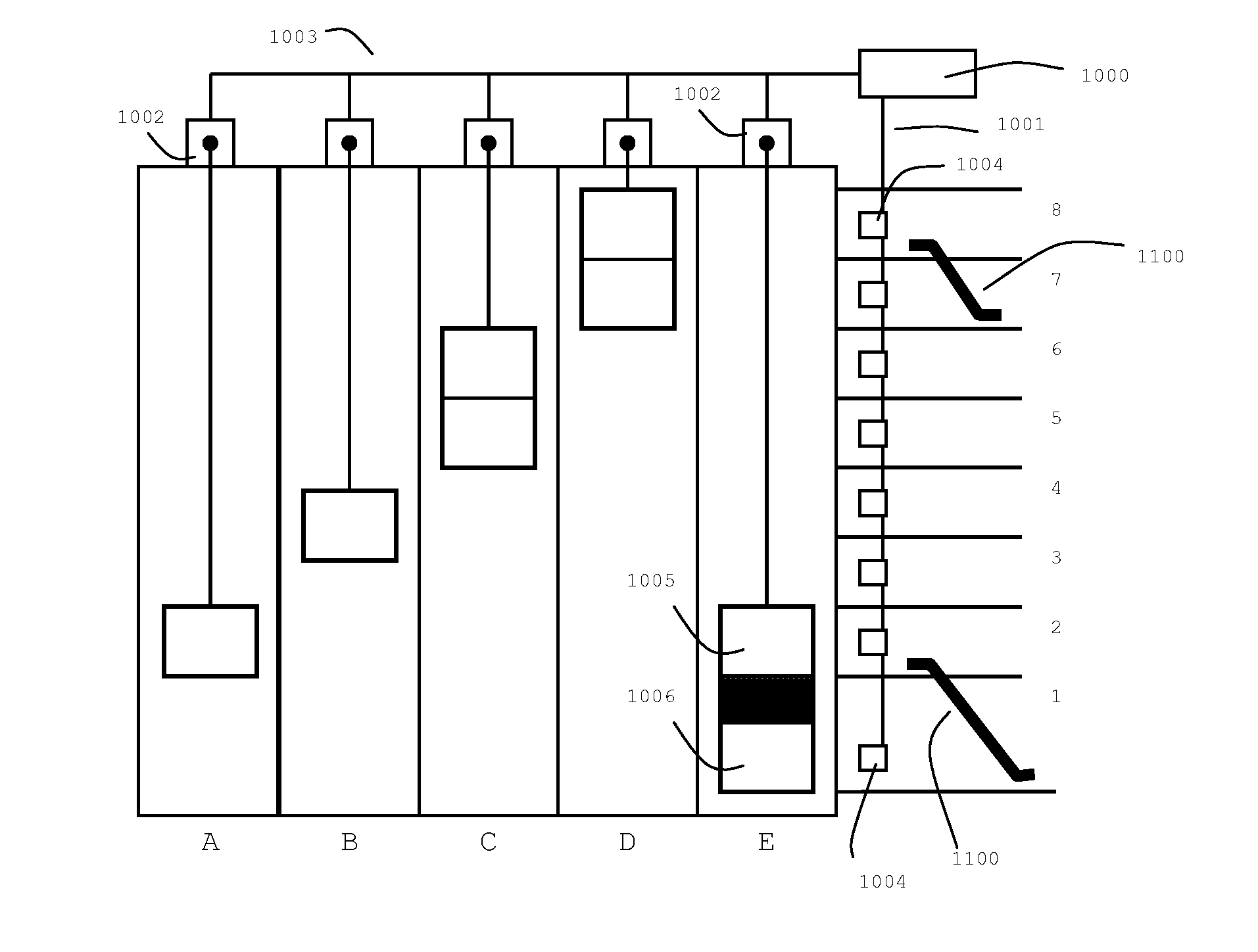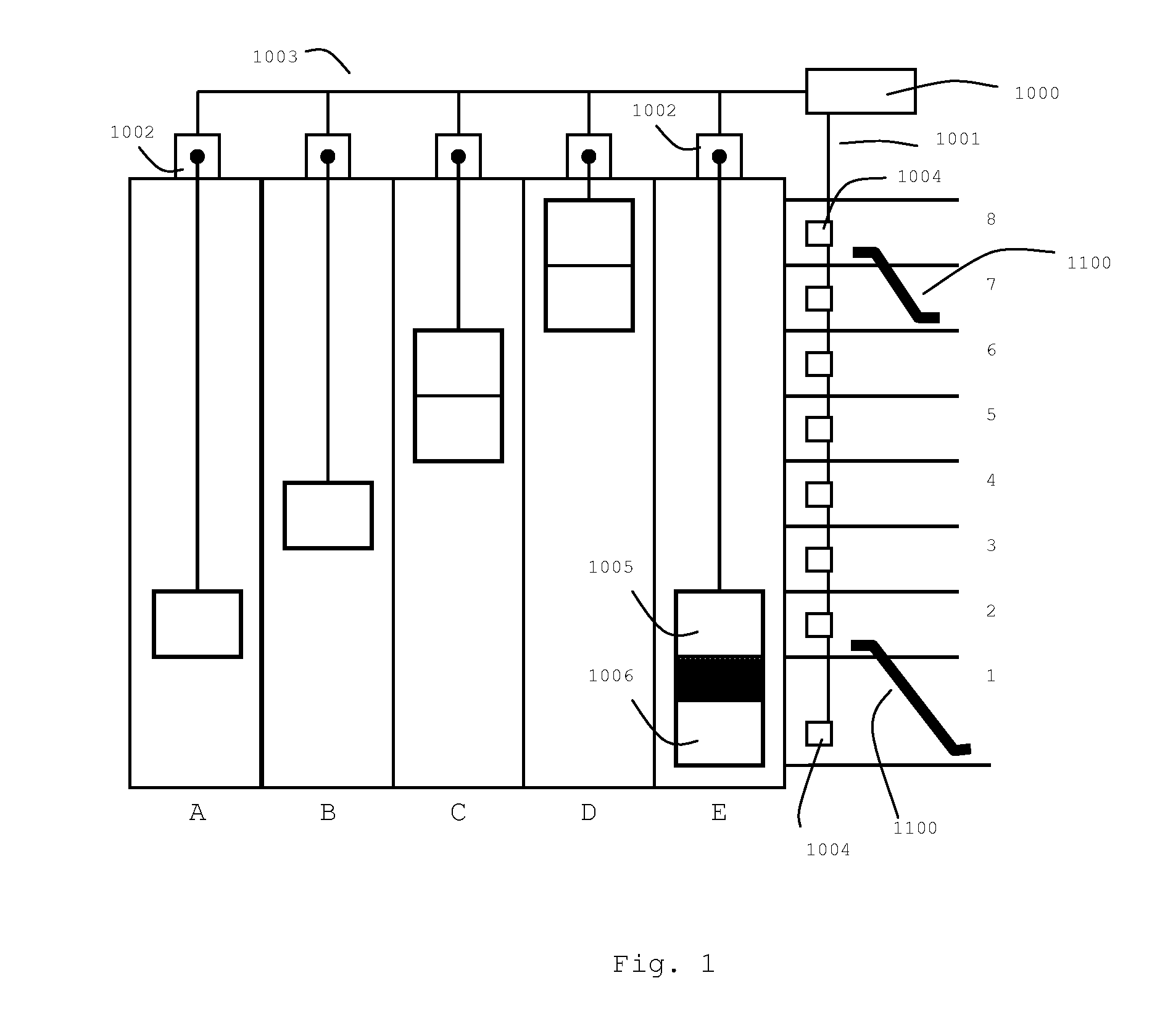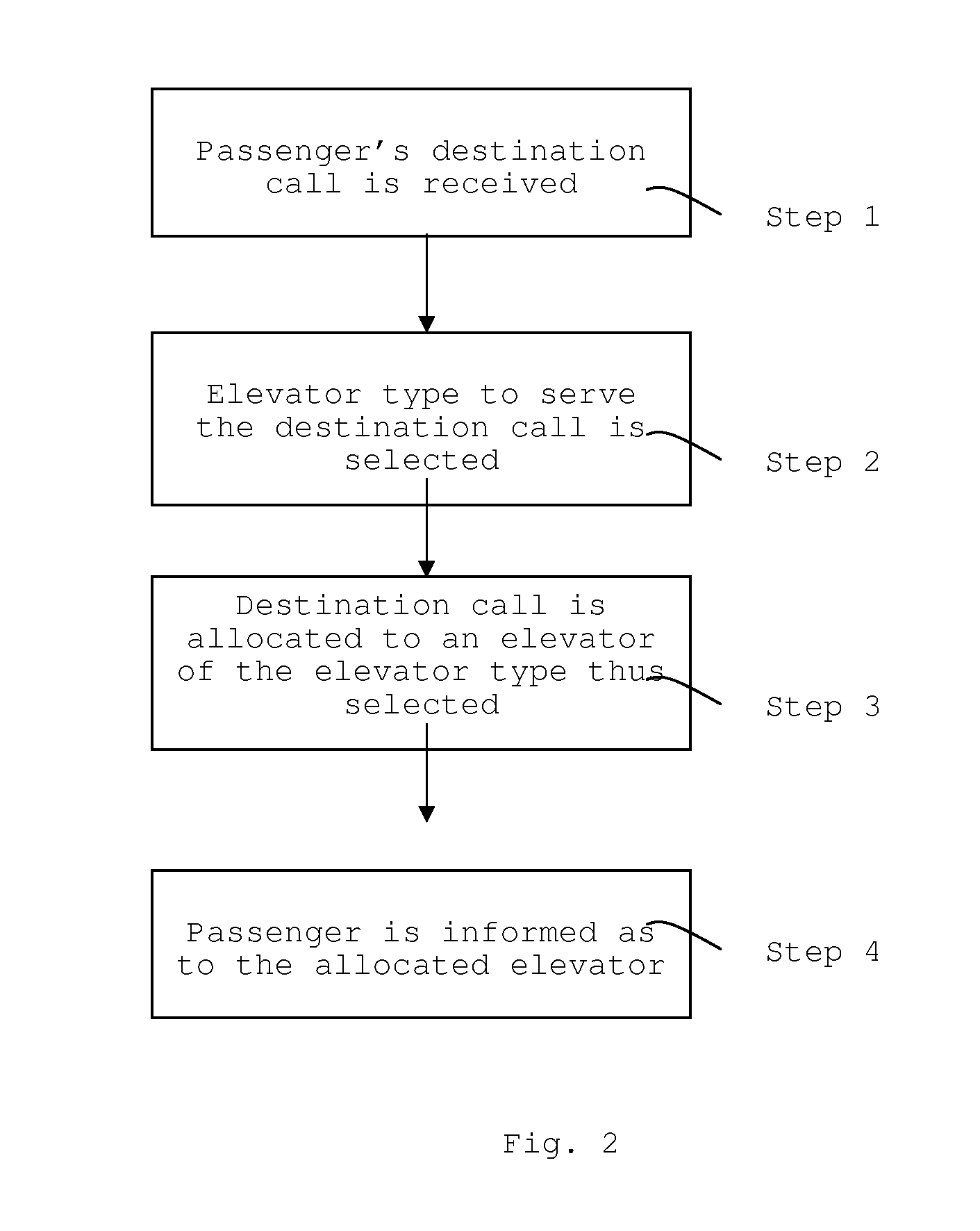Elevator system
- Summary
- Abstract
- Description
- Claims
- Application Information
AI Technical Summary
Benefits of technology
Problems solved by technology
Method used
Image
Examples
Embodiment Construction
[0013]The method of the invention is characterized by what is disclosed in the characterizing part of claim 1. The system of the invention is characterized by what is disclosed in the characterizing part of claim 12. Other embodiments of the invention are characterized by what is disclosed in the other claims. Inventive embodiments are also presented in the description part and drawings of the present application. The inventive content disclosed in the application can also be defined in other ways than is done in the claims below. The inventive content may also consist of several separate inventions, especially if the invention is considered in the light of explicit or implicit sub-tasks or with respect to advantages or sets of advantages achieved. In this case, some of the attributes contained in the claims below may be superfluous from the point of view of separate inventive concepts. Within the framework of the basic inventive concept, features of different embodiments of the inv...
PUM
 Login to view more
Login to view more Abstract
Description
Claims
Application Information
 Login to view more
Login to view more - R&D Engineer
- R&D Manager
- IP Professional
- Industry Leading Data Capabilities
- Powerful AI technology
- Patent DNA Extraction
Browse by: Latest US Patents, China's latest patents, Technical Efficacy Thesaurus, Application Domain, Technology Topic.
© 2024 PatSnap. All rights reserved.Legal|Privacy policy|Modern Slavery Act Transparency Statement|Sitemap



